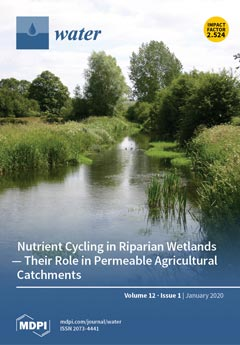Abutment scour is a complex three-dimensional phenomenon, which is one of the leading causes of marine structure damage. Structural integrity is potentially attainable through the precise estimation of local scour depth. Due to the high complexity of scouring hydrodynamics, existing regression-based relations cannot make accurate predictions. Therefore, this study presented a novel expansion of extreme learning machines (ELM) to predict abutment scour depth (
ds) in clear water conditions. The model was built using the relative flow depth (
h/
L), excess abutment Froude number (
Fe), abutment shape factor (
Ks), and relative sediment size (
d50/
L). A wide range of experimental samples was collected from the literature, and data was utilized to develop the ELM model. The ELM model reliability was evaluated based on the estimation results and several statistical indices. According to the results, the sigmoid activation function (correlation coefficient,
R = 0.97; root mean square error,
RMSE = 0.162; mean absolute percentage error,
MAPE = 7.69; and scatter index,
SI = 0.088) performed the best compared with the hard limit, triangular bias, radial basis, and sine activation functions. Eleven input combinations were considered to investigate the impact of each dimensionless variable on the abutment scour depth. It was found that
ds/
L =
f (
Fe,
h/
L,
d50/
L,
Ks) was the best ELM model, indicating that the dimensional analysis of the original data properly reflected the underlying physics of the problem. Also, the absence of one variable from this input combination resulted in a significant accuracy reduction. The results also demonstrated that the proposed ELM model significantly outperformed the regression-based equations derived from the literature. The ELM model presented a fundamental equation for abutment scours depth prediction. Based on the simulation results, it appeared the ELM model could be used effectively in practical engineering applications of predicting abutment scour depth. The estimated uncertainty of the developed ELM model was calculated and compared with the conventional and artificial intelligence-based models. The lowest uncertainty with a value of ±0.026 was found in the proposed model in comparison with ±0.50 as the best uncertainty of the other models.
Full article





